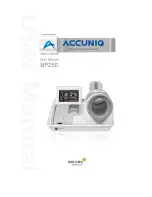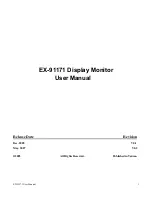
26
Installation Procedures
3.3.4 Re-packing (re-packing and re-shipping are not covered by the warranty.)
If the unit needs to be re-packaged, observe the following guidelines.
• Refer to the unpacking instructions in section “3.3.2 Unpacking (pg. 24, 25)”, and pack the unit using the
reverse procedure. There is a front and back to the miller mat, so place the shiny film surface on the outside and
the soft surface on the inside (side toward the unit).
• Restore all accessories to their original locations. Secure with adhesive tape to prevent damage during
transportation.
• Do not re-package and ship if the packing material is damaged.
3.3.5 Wiring
1) Connecting the power cable
• Refer to the section on “
Power Cord Connection
on p. 14 of the operating instructions”.
• For power source specifications, refer to “3.1 Installation Site Requirements, Section 11) Power requirements
(pg. 19)”, above.
2) Connecting signal cables
(1) Please refer to “p.12~13 of the instruction manual” for instructions on how to connect a PC or a audio device.
(2) Important notes
• Use coaxial cables. As a rough guide, for video signals use 3C-2V cables for lengths up to 15 meters, and 5C-
2V cables for lengths up to 30 meters. Use thicker cables for computer signals, since these signals are more
likely to degrade: 5C-2V cables, for example, for 15-meter lengths. Generally, thicker cables will produce
more reliable connections. You can also improve signal quality by minimizing cable length.
• Video cables plugged into video inputs and outputs close to dimmers, neon signs, air-conditioning units, or
cables for wired broadcasts may occasionally deliver slightly corrupted images.
3) Processing wires
• In the case of permanent or long-term installation, please be careful to select cables of the correct length,
considering the whole wiring route when doing this (this is not so important in the case of short-term installation
such as with special events).
• Arrange and secure cables so that they will not be subject to direct load or physical force. For temporary
installation, securing cables with string should be perfectly adequate. For permanent installations, secure by
more reliable means.
















































